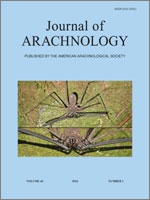Phylogenetic niche conservatism can cause strong interspecific competition among closely related species leading to competitive exclusion from local communities or meta-communities. However, the coexistence of close relatives is often reported. One of the most frequent mechanisms mediating such coexistence is resource partitioning. Here, we investigated the niche differentiation of two sibling spider species, Pardosa alacris C.L. Koch, 1833 and P. lugubris Walckenaer, 1802, along a canopy openness gradient. We further investigated differences in body size as an additional axis for niche partitioning. We explored niche partitioning along the canopy openness gradient at eight locations. In each afforested location, 60-m-long transects were established consisting of five pitfall traps placed at regular 15-m intervals along the gradient. We measured the body size of individuals of both species collected at the gradient's extremes. We found that the two Pardosa species occurred syntopically but had clearly differentiated spatial niches along the canopy openness gradient. Pardosa lugubris displayed a preference for closed canopies in dense forest habitats and its abundance gradually decreased as the canopy opened while the opposite was the case for P. alacris. The two species also differed in body size. Each species was larger at its preferred gradient extreme than was the other species. The coexistence of the two Pardosa species was mediated mainly by spatial niche partitioning. Body size differences may represent another axis for niche partitioning.
How to translate text using browser tools
1 April 2016
Niche differentiation of two sibling wolf spider species, Pardosa lugubris and Pardosa alacris, along a canopy openness gradient
Radek Michalko,
Ondřej Košulič,
Vladimír Hula,
Kamila Surovcová
ACCESS THE FULL ARTICLE

The Journal of Arachnology
Vol. 44 • No. 1
April 2016
Vol. 44 • No. 1
April 2016
body size
coexistence
Lycosidae
resource partitioning
spatial niche




